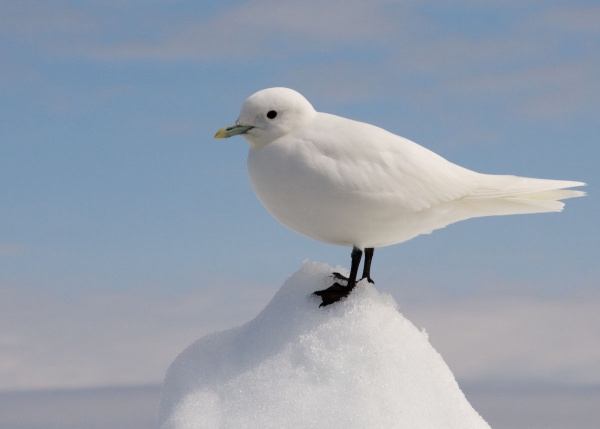Facts About Ivory gull
The ivory gull, a small bird native to the high Arctic, stands out as the sole member of the genus Pagophila. With a distribution spanning Greenland, the northernmost parts of North America, and Eurasia, this gull is truly circumpolar. Originally described in 1774 as Larus eburneus, it was later assigned to its own genus, Pagophila, in 1829 due to its unique characteristics. Recent genetic studies have revealed that its closest relative is Sabine's gull.
Spotting an ivory gull is quite easy thanks to its striking all-white plumage, blue bill tipped with yellow, and black legs. The gull also boasts a variety of vocalizations, including a distinctive flight call and specific sounds used to alarm against predators or during courtship displays. Juveniles, however, take about two years to develop their full adult plumage.
In North America, these gulls breed in the Canadian Arctic, particularly on various islands. Come winter, they are often found near polynyas—large open water areas surrounded by sea ice. Interestingly, ivory gulls are known to follow polar bears and other predators to scavenge their kills.
As of 2012, the global population of ivory gulls was estimated to be between 19,000 and 27,000, with the majority residing in Russia. However, their numbers are declining in Canada, likely due to illegal hunting and the loss of sea ice, which impacts their feeding habits. Consequently, the International Union for Conservation of Nature (IUCN) has classified the ivory gull as "Near Threatened."
The ivory gull has also captured the imagination in literature. For instance, it inspired a carving in Holling C. Holling's beloved children's book, "Seabird."

 Russia
Russia